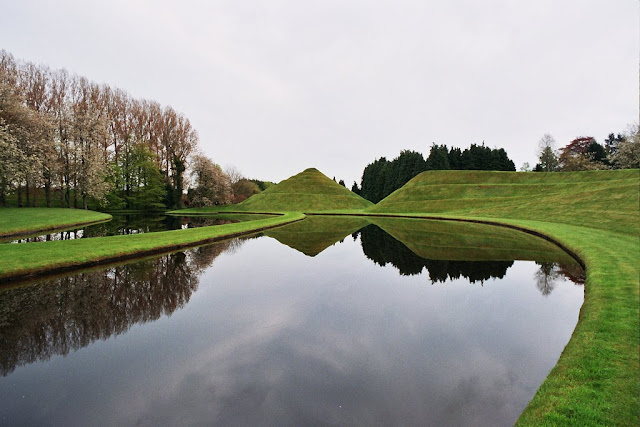Are you have ideas for decorating the home page? Maybe this article can help you to find inspiration on how to make decorative home page to be pretty.
Tuesday, 19 February 2013
10 Most Breathtaking Gardens in the World
4. Versailles – France
Probably the world's most famous garden, it was built for Louis XIV and designed by Andre Le Notre. The laying out of the gardens required enormous work. Vast amounts of earth had to be shifted to lay out the flower beds, the Orangerie, the fountains and the Canal, where previously only woods, grasslands and marshes were. The earth was transported in wheelbarrows, the trees were conveyed by cart from all the provinces of France and thousands of men, sometimes whole regiments, took part in this vast enterprise.
source:http://www.oddee.com/item_97211.aspx
10 Most Breathtaking Gardens in the World
3. Suan Nong Nooch – Thailand
This incredible park is situated in Pattaya, Thailand. It is popular
among tourists because of stunningly beautiful landscapes and marvellous
views. Everything there seems to be from a fairy-tale. It is full of
Thai style houses, villas, banquet halls, restaurants and swimming
pools. A vast 600 acres area was bought by Mr. Pisit and Mrs. Nongnooch
in 1954, this land was predicted to be a fruit plantation, but, Mrs.
Nongnooch made a trip abroad and came back with a firm decision to
create there a tropical garden of ornamental plants and flowers.
In 1980 it was opened to the public
and got an official name "Suan Nong Nooch." Suan means "garden," since
it is a place where everybody concerned can get acquainted with Thai
Culture and Cultural Shows. More than 2,000 visitors go there everyday.
This garden always looks as it does today. Also, it is a conservation
place for many plants and palms.
source:http://www.oddee.com/item_97211.aspx
10 Most Breathtaking Gardens in the World
2. Keukenhof Gardens – The Netherlands
An unprecedented wealth of spectacular floral displays planted in endless varieties, alternated with beautiful works of art. Keukenhof is unique, world famous and has been one of the most popular destinations in the Netherlands. The garden is home to 7 million tulips, which includes special hybrids that have been or are being developed. In fact, Keukenhof's pride and joy is the truly awe-inspiring Russian black tulip Baba Yaga.
source:http://www.oddee.com/item_97211.aspx
10 Most Breathtaking Gardens in the World
 The Garden of Cosmic Speculation – Scotland
The Garden of Cosmic Speculation – Scotland

Around the garden one can find amazing sculptures on themes such as this - the DNA helix in giganitic metallic glory.
Kuriositas would like to that Flickr User Paulus Maximus! for his very generous permission to allow us to use his pictures here. Please take a look at his photo sets.
source:http://www.oddee.com/item_97211.aspx
Monday, 18 February 2013
Bluebells
Hyacinthoides non-scripta (formerly Endymion non-scriptus or Scilla non-scripta) is a bulbous perennial plant, found in Atlantic areas from north-western Spain to the British Isles, and also frequently used as a garden plant. It is known in English as the common bluebell or simply bluebell, a name which is used in Scotland to refer to the harebell, Campanula rotundifolia. In spring, H. non-scripta produces a nodding, one-sided inflorescence of 5–12 tubular, sweet-scented violet–blue flowers, with strongly recurved tepals, and 3–6 long, linear, basal leaves.
H. non-scripta is particularly associated with ancient woodland where it may dominate the understorey to produce carpets of violet–blue flowers in "bluebell woods", but also occurs in more open habitats in western regions. It is protected under UK law, and in some other parts of its range. A related species, H. hispanica has also been introduced to the British Isles and hybridises with H. non-scripta to produce intermediates known as H. × massartiana.
Flower that have unique characteristics and distinctive. I show flower Bluebells







source:www.wikipedia
Hyacinthoides non-scripta (formerly Endymion non-scriptus or Scilla non-scripta) is a bulbous perennial plant, found in Atlantic areas from north-western Spain to the British Isles, and also frequently used as a garden plant. It is known in English as the common bluebell or simply bluebell, a name which is used in Scotland to refer to the harebell, Campanula rotundifolia. In spring, H. non-scripta produces a nodding, one-sided inflorescence of 5–12 tubular, sweet-scented violet–blue flowers, with strongly recurved tepals, and 3–6 long, linear, basal leaves.
H. non-scripta is particularly associated with ancient woodland where it may dominate the understorey to produce carpets of violet–blue flowers in "bluebell woods", but also occurs in more open habitats in western regions. It is protected under UK law, and in some other parts of its range. A related species, H. hispanica has also been introduced to the British Isles and hybridises with H. non-scripta to produce intermediates known as H. × massartiana.
Flower that have unique characteristics and distinctive. I show flower Bluebells


source:www.wikipedia
Subscribe to:
Comments (Atom)













